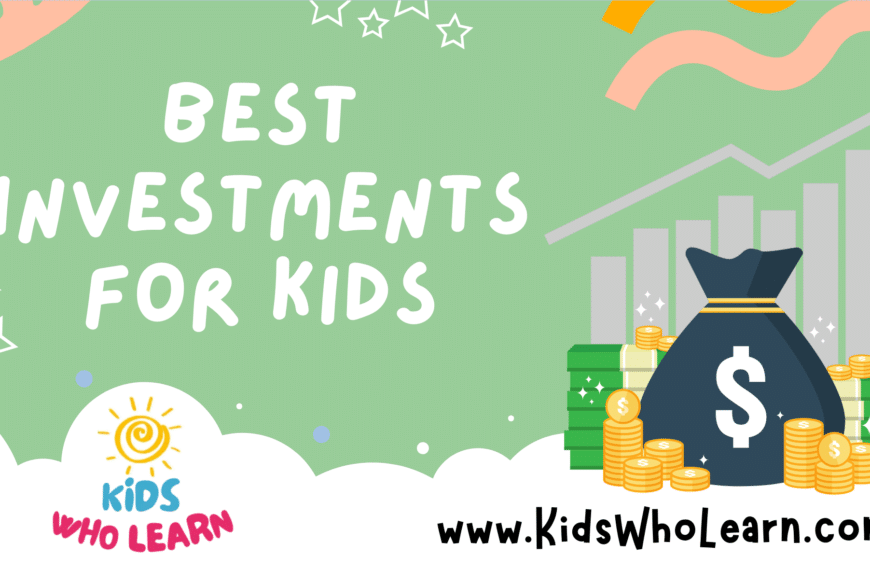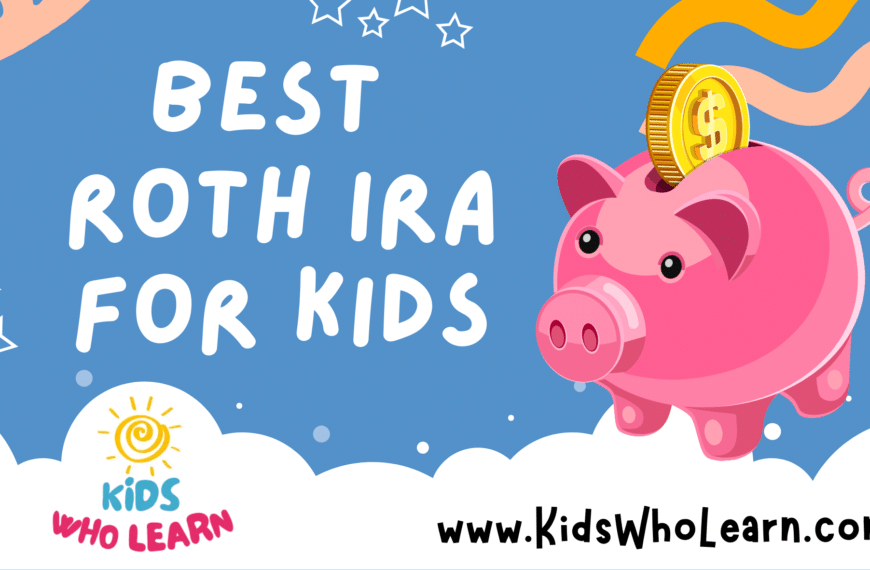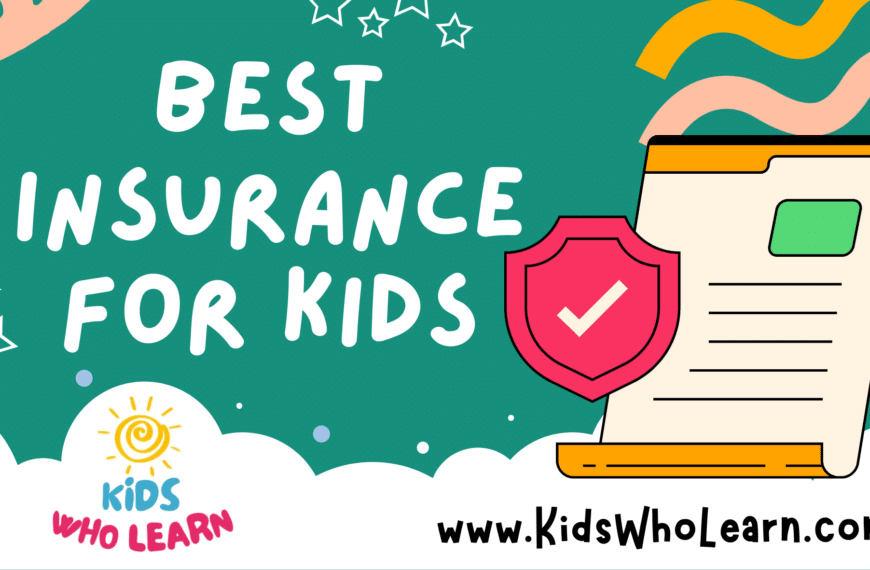Teaching kids the importance of saving money sets them up for financial success later in life. Banks now offer a variety of kid-friendly savings accounts designed to make saving an engaging and educational experience for your child. From interactive mobile apps to growth-oriented interest rates, these specialized accounts can help instill wise money-management habits early on.
As a parent, selecting the right bank for your child’s savings not only provides a safe place for their money to grow but also serves as a financial learning tool. It’s important to look at key features such as ease of use, interest rates, fees, and educational resources when choosing the best savings account for your child. Each bank has different offerings, so it’s crucial to compare and find one that aligns with your child’s financial goals and needs.
Key Takeaways
- A child-friendly savings account helps inculcate healthy financial habits.
- Comparing different accounts’ features determines the best choice for a child’s savings.
- The right bank will blend growth potential, ease of management, and learning resources.
Understanding Kids’ Savings Accounts
When you’re looking to instill financial savvy in your children, a kids’ savings account is a solid foundation. These accounts are designed to be both educational and advantageous for young savers.
What Is a Kids Savings Account?
A Kids Savings Account is a type of savings account set up for a minor, typically under the age of 18. It’s a secure place for your child’s money, offering a way to learn about banking. Most children’s savings accounts require a parent or guardian to be a joint owner or custodian until the child reaches a specific age, usually 18.
- Ownership: Joint with adult (typically parent/guardian until child turns 18)
- Age Limit: Generally for minors (under 18)
Benefits of a Kids Savings Account
The primary benefits of opening a Kids Savings Account for your child include:
- Interest Earnings: Savings accounts usually earn interest over time, which can help to grow your child’s money. The power of compound interest teaches the benefit of saving early and often.
- Compound Interest: Interest on interest; grows savings faster
- Financial Education: Understanding how to manage a savings account can teach children valuable lessons in personal finance, such as setting savings goals and budgeting.
- Skills Developed:
- Saving discipline
- Money management
- Financial responsibility
- Skills Developed:
- Safety and Security: These accounts are typically insured by a government agency like the FDIC in the United States, up to a certain amount, which means your child’s money is safe.
- Insurance: Up to $250,000 by FDIC (for U.S. accounts)
By opening a Kids Savings Account, you encourage good savings habits from a young age and lay the foundation for your child’s financial independence.
Choosing the Right Bank for Your Child
When looking for a place to start a savings account for your child, it’s essential to assess the specific features and benefits that align with your family’s needs.
Factors to Consider in a Kids’ Bank Account
Interest Rates: Examine the interest rates offered by financial institutions, as higher rates can considerably grow your child’s savings over time.
- Fees: Choose banks or credit unions with minimal or no maintenance fees to ensure that charges don’t eat into the savings. Look for:
Fee Type Preferable Option Monthly maintenance No fee Transaction fees Unlimited free ATM fees Low or reimbursed - Accessibility: Consider if your child can manage their account online or if they need to visit a brick-and-mortar bank for transactions.
- Education Resources: Prioritize banks offering financial literacy tools to support your child’s understanding of money management.
- Minimum Balance Requirements: Look for institutions with low or no minimum balance requirements to ease the burden on your child’s account.
Bank Vs. Credit Union for Child Savings Accounts
Ownership and Profits:
- Banks are typically for-profit entities owned by shareholders. They offer extensive services and have a more widespread presence.
- Credit Unions are nonprofit institutions owned by members. They often provide lower fees and higher savings rates but might have fewer branch locations.
Service Focus:
- Banks: You might prefer online banks for their higher interest rates and tech-savvy features.
- Credit Unions: If personalized service is a priority, credit unions are known for their member-focused approach and community involvement.
Regulatory Differences:
- Both banks and credit unions are safe; banks are insured by the Federal Deposit Insurance Corporation (FDIC), while credit union accounts are insured by the National Credit Union Administration (NCUA).
Essentially, consider the unique benefits and limitations of both banks and credit unions to determine the best fit for your child’s savings account.
Key Features of the Best Savings Accounts for Kids
When selecting the best savings account for your child, it’s important to consider features that will foster growth and financial learning. High interest rates, low fees, easy access, and educational tools are key.
Interest Rates and APY
- Annual Percentage Yield (APY): Look for accounts offering competitive APY to maximize your child’s savings growth over time.
- Interest Rates: Higher interest rates can significantly increase the savings, so compare rates offered by different institutions.
Fees and Minimum Balance Requirements
- Monthly Fees: Ideal kids’ savings accounts should have no monthly fees, allowing the savings to grow unimpeded.
- Minimum Balance Requirements: Seek accounts with low or no minimum balance requirements to reduce the pressure on maintaining a certain account balance.
Accessibility and Convenience
- Online Access: Ensure the account provides robust online access for convenient monitoring and management of funds.
- Debit Card: While not always necessary, the availability of a debit card can help teach responsible spending.
Additional Banking Services
- Savings Account Features: Look for additional features like automatic transfers, round-up savings, or custom savings goals to enhance the banking experience.
- Educational Resources: Banks that provide educational content to promote financial literacy can be advantageous for your child’s financial education.
Top Kids Savings Accounts Analyzed
When choosing a savings account for your child, it’s essential to consider factors like interest rates, fees, and account features. Below is an analysis of notable savings accounts aimed at young savers.
Alliant Credit Union Kids Savings Account
With the Alliant Credit Union Kids Savings Account, your child can earn an impressive APY, currently at 0.55%. There’s no monthly fee, which enhances savings growth. This account also requires just a $5 minimum deposit to open, making it very accessible.
Capital One Kids Savings Account
Capital One’s Kids Savings Account offers a competitive interest rate without any monthly fees, plus it has the convenience of being managed entirely online through Capital One 360’s platform. Your child can also set savings goals and track their progress, fostering financial literacy from an early age.
M&T Bank
M&T Bank’s starter savings options provide a practical choice for your child’s savings journey. Although the interest rate is typically lower compared to specialized kids accounts, they often waive monthly maintenance fees for minors. M&T prioritizes financial education through engaging online tools.
Bank of America Minor Savings Account
The Bank of America Minor Savings Account incentivizes saving with a modest interest rate and eliminates the worry of monthly maintenance fees for account holders under 18. It requires a minimal initial deposit and provides a full suite of online banking tools for easy account management.
Chase Bank Youth Accounts
Chase Bank offers a “Chase First Banking” account designed for kids, providing a no-fee, no-minimum deposit option managed by parents with the Chase Mobile app. It’s a good fit for teaching money management, although it doesn’t earn interest like traditional savings accounts.
How to Open a Kids Savings Account
Opening a savings account for your child provides a way to teach them about saving and managing money from an early age. You will act as a custodian and guide them through the financial journey.
Application Process and Requirements
To start the application process, you will need to provide your child’s Social Security number as well as your own. Most banks require both the child and the custodian (you) to be present during the account opening. You and your child will be listed as the joint owners.
- Documents Required:
- Child’s Social Security card or birth certificate
- Custodian’s government-issued ID
- Proof of address
The application can usually be completed online or in person at a bank branch. Read through the terms carefully to understand any fees or services offered.
Managing the Account with Your Child
As the custodian, you will manage the savings accounts for kids until they reach the age of majority. It’s your responsibility to help set savings goals and monitor the account.
- Accessing the Account:
- Online banking portal
- Mobile apps
- In-branch visits
You should periodically review the account with your child, teaching them how to check the balance and explaining the importance of saving. Remember, you’re not only managing a bank account but also nurturing your child’s financial literacy.
Financial Education and Money Management
When selecting the best bank for your child’s savings, consider how it can aid in teaching them about personal finance and money management. A bank that provides resources to help your child learn about financial goals and budgeting can be incredibly beneficial.
Encouraging Financial Responsibility
Banks with programs for kids often offer incentives for saving, such as matching contributions or interest bonuses. This encourages children to save more and learn the value of money. For example:
- Interest Rate Boosts: Some banks offer higher interest rates for the first $500 saved, which can help your child see their savings grow more quickly.
- Milestone Rewards: Look for banks that reward milestones, such as depositing a certain amount or opening an account, which can motivate kids to set and achieve financial goals.
Tools for Tracking Savings and Spending
Effective money management goes hand in hand with being able to track finances. Banks that provide tools for monitoring savings and expenses empower kids to manage their personal finance with more confidence.
- Digital Banking Apps: Aim to choose a bank with a user-friendly app that allows kids to check their balance, view transaction history, and set saving targets.
- Allowance Management: Some banks offer services to manage children’s allowance, disbursing it into their account and tracking how it’s spent against a budget.
Choosing a supportive bank helps lay a strong foundation for your child’s financial literacy and capabilities.
Digital Features and Technological Integration
When selecting the best bank for your kids’ savings, it’s essential to consider how a bank integrates technology to enhance the banking experience. From mobile banking to electronic statement delivery, the way a bank employs technology can dramatically affect convenience and security.
Mobile Banking and Apps
Your child’s ability to manage savings through a mobile banking app can provide them with both convenience and financial education. Look for a bank that offers an intuitive app where kids can check their balance, review transactions, and learn the basics of financial management. Features such as real-time alerts and the capability to set savings goals can be crucial in teaching responsibility and savings habits.
Key Mobile App Features:
- Real-time balance checks
- Transaction history review
- Savings goals and tracking tools
- Real-time alerts for transactions and goals
Online Safety and Security
The security features of a bank’s digital platforms are of utmost importance. Ensure that online safety measures are robust and comply with industry standards. Banks should offer features like two-factor authentication (2FA), encryption, and fraud monitoring to protect your child’s savings account.
Security Measures:
- Two-Factor Authentication (2FA): Adds an extra layer of security during login.
- 256-bit Encryption: Protects data transmission between your device and the bank.
- Fraud Monitoring: Detects unusual activities and helps prevent unauthorized access.
When receiving electronic statements, confirming that your bank uses secure channels for delivery is crucial. This helps safeguard personal information and reduces the risk of identity theft.
Additional Financial Products for Growing Needs
As your children’s financial savvy matures, there are tailored banking products that cater to their burgeoning independence and investment curiosity.
Teen Checking Accounts
Teen checking accounts offer a way for you to teach your teens about financial responsibility within a safe, controlled environment. Many banks provide these accounts with features such as:
- No minimum balance: This allows your teen to manage an account without the pressure of maintaining a certain amount.
- Debit cards with custom spending limits: These can help your teen learn the ins and outs of digital payments and budgeting.
Some banks might also integrate parental monitoring tools that notify you of your teen’s spending patterns, providing peace of mind and supporting financial education.
Investment Options for Young Savers
When your teens are ready to venture beyond a savings account, there are various investment options available:
- Stocks and ETFs: You may open custodial accounts that allow teens to invest in stocks and ETFs under your supervision.
- Educational resources: Look for banks that offer educational tools to build your teen’s understanding of investing concepts.
Investing can instill a sense of ownership and an understanding of the financial markets that will be valuable throughout your teen’s life.
Special Considerations
When choosing the best bank for your child’s savings, it’s crucial to understand the potential tax responsibilities and how an account can affect their credit history.
Tax Implications and Unearned Income
Understand Your Tax Obligations: Depending on the amount of interest earned, your child’s savings could be subject to what’s known as the “Kiddie Tax.” For 2023:
- The first $1,150 of unearned income is typically tax-free
- The next $1,150 is taxed at your child’s rate
- Unearned income over $2,300 is taxed at the parent’s rate
Account Ownership Structure: Be aware that the way the savings account is structured (e.g., custodial accounts) can impact whose tax return will report the interest income.
Credit Building for Teenagers
Secured Savings Account Option: Some banks offer secured savings accounts that can help your teenager start building credit. Your teen’s account activity can be reported to the credit bureaus, which can be beneficial if managed responsibly.
- Timely transactions: Positive savings behavior can lead to a stronger credit history.
- Overdraft practices: Make sure to understand the account’s overdraft policy, as this can negatively impact credit.
Financial Education: Choose a bank that offers educational resources. Understanding credit scores, and how everyday banking behavior affects them, is essential for your teen’s financial future.
Frequently Asked Questions
When exploring savings options for children, it’s essential to examine features like interest rates, fees, and accessibility. Below are common questions to guide you in choosing the best savings account for your child.
What are the key features to look for in a child savings account?
For a child’s savings account, prioritize accounts with high interest rates, low fees, and features like round-up savings or education resources. Also, consider ease of fund access and whether the account transitions to a regular savings account once your child turns 18.
How can I compare the benefits of different high-yield savings accounts for my child?
To compare high-yield savings accounts, look at the annual percentage yield (APY), minimum balance requirements, and any potential fees. Consider also the customer service and the online banking experience the institution offers to ensure it’s user-friendly for you and your child.
Which banks offer the best joint savings accounts for parents and kids?
Banks like Ally, Capital One, and Chase typically offer competitive joint savings accounts for parents and children. These accounts often come with tools to teach children about saving and usually have options for parental controls.
Are there any banks that provide specifically tailored bank accounts for minors?
Many banks offer accounts specifically for minors like Wells Fargo’s Clear Access Banking and Bank of America’s Minor Savings Account. These accounts often have no minimum balance, low fees, and restrictions that lift when the child reaches a certain age.
What are the advantages of opening a 529 savings account for a child’s education?
A 529 savings account offers tax advantages for education savings, with high contribution limits and investment growth potential. The account can be used for college expenses, and some states also offer tax deductions for contributions.
Are there any financial institutions that offer no-fee savings accounts for children?
Financial institutions like Alliant Credit Union and Capital One provide no-fee savings accounts for children, allowing them to earn interest without the worry of fees eating into their savings. These accounts sometimes offer competitive interest rates as an incentive.












